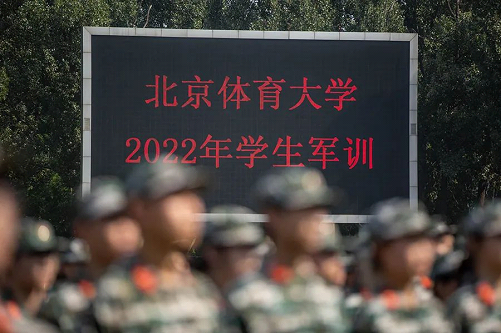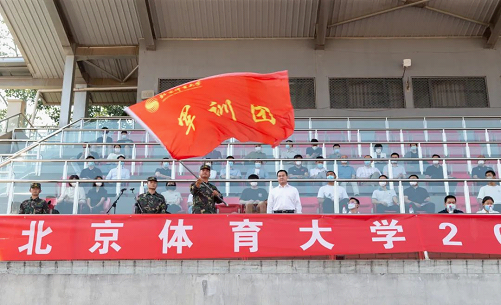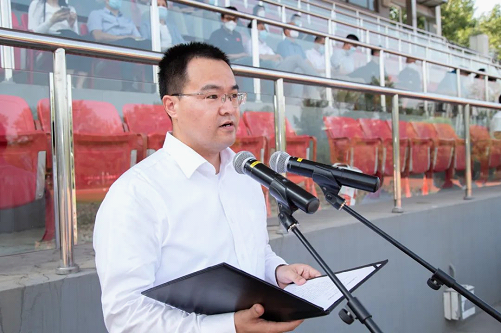Prognostic significance of monitoring DEK-NUP214 fusion gene after allogeneic hematopoietic stem cell transplantation in patients with acute myeloid leukemia
[Abstract]
purpose
To investigate the dynamic changes of DEK-NUP214 fusion gene before and after transplantation and its clinical significance in AML patients before and after transplantation.
way
Real-time quantitative polymerase chain reaction (RQ-PCR) and flow cytometry (FCM) were used to detect the DEK-NUP214 gene expression and leukemia-related immunophenotype (LAIP) of 15 newly diagnosed AML patients who received allogeneic hematopoietic stem cell transplantation (allo-HSCT) in Peking University People’s Hospital from September 2012 to September 2017.
result
The median follow-up time was 657 days (62-2212 days). The median expression level of DEK-NUP214 was 488.2% (273.6-1692.1%). Thirteen patients had complete remission before allo-HSCT. Among the 15 patients before allo-HSCT, 13 (86.7%) were positive for DEK-NUP214, with a median of 0.32% (0.029-738.9%). Nine patients (69.2%) remained positive for DEK-NUP214 gene after allo-HSCT. However, its expression level decreased by about 500 times (5.7-5,663 times) within one month after transplantation. After transplantation, 5 cases died (33.3%) and 2 cases recurred (13.3%). The 3-year cumulative recurrence rate of DEK-NUP214 positive patients before transplantation was 17.5 11.3%, and the 3-year overall survival rate was 60.5 13.8%. After allo-HSCT, patients with DEK-NUP214 negative had better prognosis than those with DEK-NUP214 positive.
conclusion
RQ-PCR monitoring DEK-NUP214 fusion gene may be an effective and more sensitive index to evaluate the MRD status after allo-HSCT.
[Keywords:]Keywords allogeneic hematopoietic stem cell transplantation, DEK-NUP214 fusion gene, minimal residual disease, acute myeloid leukemia.
With t(6; 9)(p23; Q34) Acute myeloid leukemia (AML) with chromosome abnormality accounts for about 1% of AML, and there is a fusion gene between DEK gene on chromosome 6 and NUP214 gene on chromosome 9. Slovak et al. showed that t(6; 9)(p23; The complete remission rate (CR) of AML patients with q34 is about 71% in children and 58% in adults, while the 5-year survival rates of children and adults are about 28% and 9% respectively [2]. Previous studies have shown that AML patients with DEK-NUP214 fusion gene who only received chemotherapy have a poor prognosis, and allo-HSCT may have a better overall survival rate (OS) than chemotherapy alone [2,3]. Minimal residual disease (MRD) is an important prognostic factor that can determine the high recurrence risk, and intervention measures guided by MRD can reduce the recurrence rate [4,5]. Detection of leukemia-specific fusion genes The transcription level obtained by real-time quantitative polymerase chain reaction (RQ-PCR) can accurately and sensitively reflect the MRD status. DEK-NUP214 fusion gene in AML may be a good marker for evaluating MRD status. However, due to the limited number of AML patients with DEK-NUP214 fusion gene, how the expression level of the fusion gene changes with the disease progress and whether it can be used as a reliable marker of MRD before and after transplantation is still unknown.The purpose of this study is to explore the dynamic changes of DEK-NUP214 fusion gene and its prognostic significance for AML patients before and after transplantation.
One,Research objects and methods
1. Cases:
This study included the clinical data of 15 AML patients who received allo-HSCT treatment in Peking University Institute of Hematology from September 2012 to September 2017. The widely used WHO standard was used to diagnose patients [6]. Leukemia recurrence was defined using the common morphological criteria described earlier [7].
2. Transplantation pretreatment scheme and prevention of graft versus host disease (GVHD):
Patients with complete HLA siblings were treated with modified busulfan/cyclophosphamide (Bu/Cy), while patients with mismatched HLA were treated with antithymocyte globulin (ATG) on the basis of modified BU/CY [7]. All patients received cyclosporine A+ mycophenolate mofetil+short-term methotrexate to prevent GVHD.
3. Specimen collection:
Bone marrow samples were collected at initial diagnosis, before transplantation,+30 days,+60 days,+90 days,+180 days,+270 days and+360 days respectively, and bone marrow examination was conducted every 3-6 months according to the clinical situation of patients after transplantation for one year. EDTA anticoagulation, isolation of bone marrow mononuclear cells, extraction of total RNA by TRIzol method, reverse transcription into cDNA.
4.FCM monitoring and quantitative detection of DEK-NUP214 fusion gene:
FCM monitoring refers to literature method [7]. Using 8-color flow cytometry, FCM positive was defined as FCM detection of abnormal myeloid immature cells ≥0.01%. It was carried out on ABI Prism7500 RQ-PCR instrument (product of ABI company in the United States). 10ul of reaction system: 0.3umol/L of upstream and downstream primers, 0.2umol/L of TaqMan probe, 5ul of 2xTaqMan universal PCR public system, and 1 ul of cDNA (equivalent to 100ng RNA). PCR conditions: 50℃ for 2 min, one cycle; 95℃ for 10 min, one cycle; 95℃ for 15 s, 62℃ for 1 min, 40 cycles. The internal reference gene is ABL. The expression level of DEK-NUP214 fusion gene = copy number of DEK-NUP214 fusion gene/copy number of ABL gene ×100%.
5. Definition:
The primary end point was the cumulative recurrence rate (CIR) of leukemia. Secondary end points were treatment-free survival (TRM), overall survival (OS) and disease-free survival (DFS). Recurrence, OS, DFS and MRD are defined as mentioned above [8]. Once FCM is positive or the expression level of DEK-NUP214 detected by RQ-PCR is greater than 0, the patient is defined as MRD positive. Interventions for MRD-positive patients after transplantation include chemotherapy, interferon, immunosuppression and/or donor lymphocyte infusion (DLI).
6. Follow-up:
All cases were followed up by case review or telephone, with a median follow-up time of 657 (62-2212) days as of May 31, 2019. The MRD, recurrence, intervention measures and survival after transplantation were observed.
7. Statistical analysis:
SPSS 23.0 software was used for statistical analysis. Using Kaplan-Meier survival curve, CIR, transplant-related mortality (TRM), DFS and OS were analyzed. Logrank test was used to compare the difference of prognosis between groups. P value ≥0.05 is considered statistically significant.
Second,Clinical research results
1. Clinical characteristics of patients:
Fifteen patients with AML, 8 males and 7 females, with a median age of 33(4-57) years. The median expression level of newly diagnosed DEK-NUP214 was 488.2% (273.6–1692.1%). Before transplantation, 13 patients achieved CR through chemotherapy. Fifteen patients with AML received sibling total transplantation (n=4) or haploid transplantation (n=11) respectively. All patients received stable neutrophil implantation. Two patients (13.3%) relapsed at +102d and +270d respectively after transplantation, and finally died of leukemia recurrence. In addition, 3 cases were treatment-related deaths (Table 1).
2. Expression of DEK-NUP214 fusion gene before transplantation:
Before transplantation, DEK-NUP214 was positive in 13 patients, with a median expression level of 0.38% (0.029-738.9%). Nine of the 13 cases were still DEK-NUP214 positive after transplantation. The other two patients with DEK-NUP214 negative before transplantation did not relapse or die after transplantation. Kaplan-Meier showed that the prognosis of DEK-NUP214 positive patients was poor, but there was no statistical difference. The 3-year CIR of positive patients before transplantation was 17.5 11.3% (P = 0.545, Figure 1A). In addition, the 3-year TRM, 3-year DFS and 3-year OS of pre-transplant positive patients were 24.5 12.3%, 61.5 13.5% and 60.5 13.8%, respectively (P = 0.464, Figure 1b; P=0.336, Figure 1c; P=0.329, fig. 1D).
3. Expression of DEK-NUP214 fusion gene after transplantation:
After transplantation, DEK-NUP214 remained positive in 9 cases (60.0%). However, its expression level decreased by about 500 (5.7-5,663) times within one month after transplantation. Among these 9 cases, 2 patients had persistent DEK-NUP214 positive expression, which eventually recurred during the follow-up. Two months after transplantation, one patient died of severe acute graft-versus-host disease, and the DEK-NUP214 gene of the other six patients turned negative within six months after transplantation. The 3-year CIR of DEK-NUP214 positive group was higher, which was 27.1 16.5%. There was no recurrence in DEK-NUP214 negative group (P=0.187, Figure 2A). Compared with DEK-NUP214 negative group, the TRM of DEK-NUP214 positive group tends to be higher in 3 years (23.8 14.8% and 16.7 15.2% respectively, P=0.674, Figure 2B). The 3-year DFS and 3-year OS between the two groups were 55.6 16.6% and 83.3 15.2 (P = 0.229, Figure 2C) and 53.3 17.3% vs.83.3 15.2% (P = 0.245, Figure 2D), respectively.
4. Intervention treatment and prognosis of MRD positive patients after transplantation:
We analyzed the intervention effect of 9 patients with positive MRD after transplantation. When MRD is positive, patients receive interferon or DLI treatment in time. Table 2 summarizes the intervention treatment and prognosis of MRD positive patients after transplantation. Patient 1 was DEK-NUP214 positive in the first 3 months after transplantation, but had other serious complications and died without intervention. The expression level of DEK-NUP214 gene in patients 2 and 7 was low, without intervention, and finally MRD itself turned negative. Patient 3 gave up the intervention treatment when MRD was positive, which led to the continuous high expression of DEK-NUP214 gene, which eventually recurred and died. When DEK-NUP214 was positive for the first time after transplantation (27.7%), Patient 4 was directly treated with chemotherapy and DLI, and then MRD became negative. Patient 5 died of infection early after transplantation. Patients 6 and 8 received interferon therapy and MRD became negative. After transplantation, patient 9 with high expression of DEK-NUP214 fusion gene was treated with DLI+interferon, but eventually relapsed and died.
Third,Discussion and analysis
Due to the limited number of patients with DEK-NUP214 positive AML, few studies have paid attention to the changes of the expression level of this gene with the disease process and whether it can be used as a reliable marker of MRD before and after transplantation. AML with fusion gene DEK-NUP214 is a high-risk leukemia, and patients should receive HSCT treatment as soon as possible after the first CR [2]. Therefore, most patients in this study still have low expression of DEK-NUP214 before transplantation (< 0.1%). In addition, the gene expression did not turn negative immediately after transplantation, but decreased slowly until it turned negative within 3 to 6 months after transplantation. Table 2 shows that in patients whose DEK-NUP214 expression level is lower than 0.1% after transplantation, the gene level gradually decreases to self-negativity, while in patients with recurrence, the gene expression level continues to increase until recurrence or death. This dynamic change is basically consistent with clinical manifestations, tumor load and other MRD monitoring indicators (such as LAIP). The expression level higher than 0.1% implies a high risk of recurrence after transplantation. 0.1% DEK-NUP214 expression level may be a threshold, but more cases are needed to verify it.
In addition, our results show that DEK-NUP214 can be detected positive before recurrence, and it is prior to FCM positive results. Ommen HB et al. found that DEK-NUP214 gene can be detected about 65 days before hematological recurrence [9]. Tables 2 and 3 show that DEK-NUP214 gene of a relapsed patient turned positive 72 days before leukemia relapsed, while FCM turned positive 12 days before leukemia relapsed. Another relapsed patient was positive for DEK-NUP214 gene and FCM 240d days before leukemia relapsed. Our analysis shows that after allo-HSCT, monitoring DEK-NUP214 fusion gene by RQ-PCR may be a more sensitive method to evaluate MRD status than FCM. Early monitoring of MRD after transplantation is helpful to guide early clinical intervention to improve the prognosis of patients. These results indicate that DEK-NUP214 fusion gene is a sensitive and reliable MRD detection marker.
Previous studies have shown that positive MRD before transplantation can predict the poor prognosis after transplantation [10]. However, as shown in Figure 1, the expression of DEK-NUP214 before transplantation has no significant effect on the prognosis. This is because most patients (n=12, 80.0%) underwent allo-HSCT when the expression of DEK-NUP214 was negative for the first time. Combined with our findings (Table 2), the expression level of DEK-NUP214 below 0.1% has no significant effect on prognosis. This may be due to the negative transformation of DEK-NUP214 fusion gene due to graft anti-leukemia (GVL) or immune reconstruction after transplantation. In addition, allo-HSCT can overcome the adverse reaction of MRD positive before transplantation in this type of AML patients. Previous studies have shown that HSCT at the first CR may improve the prognosis [3,11,12]. Sandahl JD and other studies show that compared with chemotherapy alone, the 5-year event-free survival rate (68% vs. 18%) and overall survival rate (68% vs. 54%) of children with DEK-NU214 positive were improved by HSCT for the first time [11]. Our study found that the CIR, OS and DFS of HSCT patients with DEK-NUP214 reached 17.5%, 60.5% and 61.5% respectively. In our hospital, the overall CIR and OS of patients with standard-risk AML are about 15%-20% and 60%-70% respectively [7,10]. Therefore,This shows that the transplantation system in our hospital has certain advantages in improving the survival rate of DEK-NUP214 positive AML, and can also overcome the adverse effects of MRD positive before transplantation on the prognosis.
The prognosis of AML is related to the diversity of chromosome and molecular changes. Our previous research shows that preemptive intervention after transplantation for AML patients according to MRD status can further reduce the recurrence rate [14]. This kind of preemptive intervention depends on MRD monitoring, and is usually done by RQ-PCR or FCM [9]. Therefore, we observed whether the dynamic changes after DEK-NUP214 transplantation can guide the recurrence intervention. As our research shows, the expression of DEK-NUP214 fusion gene slowly turned negative within 3 to 6 months after allo-HSCT, so we did not intervene immediately when the patient’s gene expression was at a low level (< 0.1). Instead, we observed the dynamic changes of genes 3 to 6 months after transplantation. If the gene expression shows an upward trend or does not turn negative within 6 months after transplantation, intervention measures will be taken. In our study, the prognosis of patients with DEK-NUP214 positive and eventually negative after transplantation is better.
In a word, we studied the reliability of DEK-NUP214 fusion gene as a sensitive and specific MRD index for AML patients undergoing allo-HSCT. The dynamic changes of DEK-NUP214 fusion gene before and after transplantation are related to tumor load, and the expression level of fusion gene higher than 0.1% implies high recurrence risk after transplantation. In addition, allo-HSCT can overcome t(6; 9) Adverse effects on AML patients. Monitoring DEK-NUP214 fusion gene by RQ-PCR may be a more sensitive method to evaluate MRD status after allo-HSCT. Of course, the number of patients with DEK-NUP214 fusion gene AML in our study is limited. It is still necessary to accumulate more samples for continuous research to more clearly prove the dynamic changes of DEK-NUP214 expression before and after transplantation.
Note:This article comes from the topic of "Molecular Diagnosis" in the fifth issue of Clinical Laboratory in 2021.











